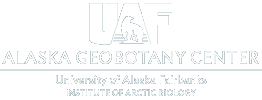About ArcSEES
The goal of this project is to devise a sustainable approach to assessing the cumulative effects of oil exploration through combining detailed ground studies, local community input, industry involvement, and an international perspective. The project takes a three-pronged approach.
A case study of the cumulative effects of industrial infrastructure at Prudhoe Bay, Alaska, focuses on infrastructure-related effects associated with gravel mines, roads and other areas of gravel placement. Project components include ground-based studies, an examination of infrastructure and landscape change at multiple scales, and a human dimension that encompasses evaluation of adaptive management planning for infrastructure in northern Alaska and CE studies associated with the Iñupiat village of Nuiqsut.
ArcSEES seeks to develop a process-based understanding of infrastructure-related permafrost-landform-vegetation succession in terrain undergoing thermokarst formation (the development of highly eroded landforms the result from the thawing of ice-rich permafrost). The study will help to answer the questions: What will these areas look like in 50 -100 years? Can adaptive management methods address the complex issues related to placement, usage and decommissioning of infrastructure in Northern Alaska?
2
An Arctic Infrastructure Action Group (AI-AG) will bring the CE issues to greater prominence in the international Arctic research community. The AI-AG will consist of local people who interact with development infrastructure, permafrost scientists, ecologists, hydrologists, engineers, social scientists and educators seeking to develop adaptive management strategies that address the unique issues related to networks of infrastructure in arctic permafrost environments. Three workshops will bring panarctic participants together, first in a scoping workshop and then to focus specifically on the two most rapidly expanding areas of Arctic infrastructure, the North Slope of Alaska and the Yamal Peninsula, Russia.
3
An education/outreach component to train students in Arctic systems and introduce them to the issues of industrial development and adaptive management approaches. Students will learn firsthand about the issues with oilfield infrastructure, its impacts and vegetation rehabilitation practices during an expedition along the Elliott and Dalton highways in Alaska, including a section at Prudhoe Bay. Students will visit the village of Nuiqsut to experience village life and discuss CE issues with the local residents.
Funded by NSF Award No. 126385.
Read the proposal
Get In Touch
The Alaska Geobotany Center is located on the West Ridge of the University of Alaska Fairbanks campus. Our office is located in room 252, on the second floor of the Arctic Health Research Building.
